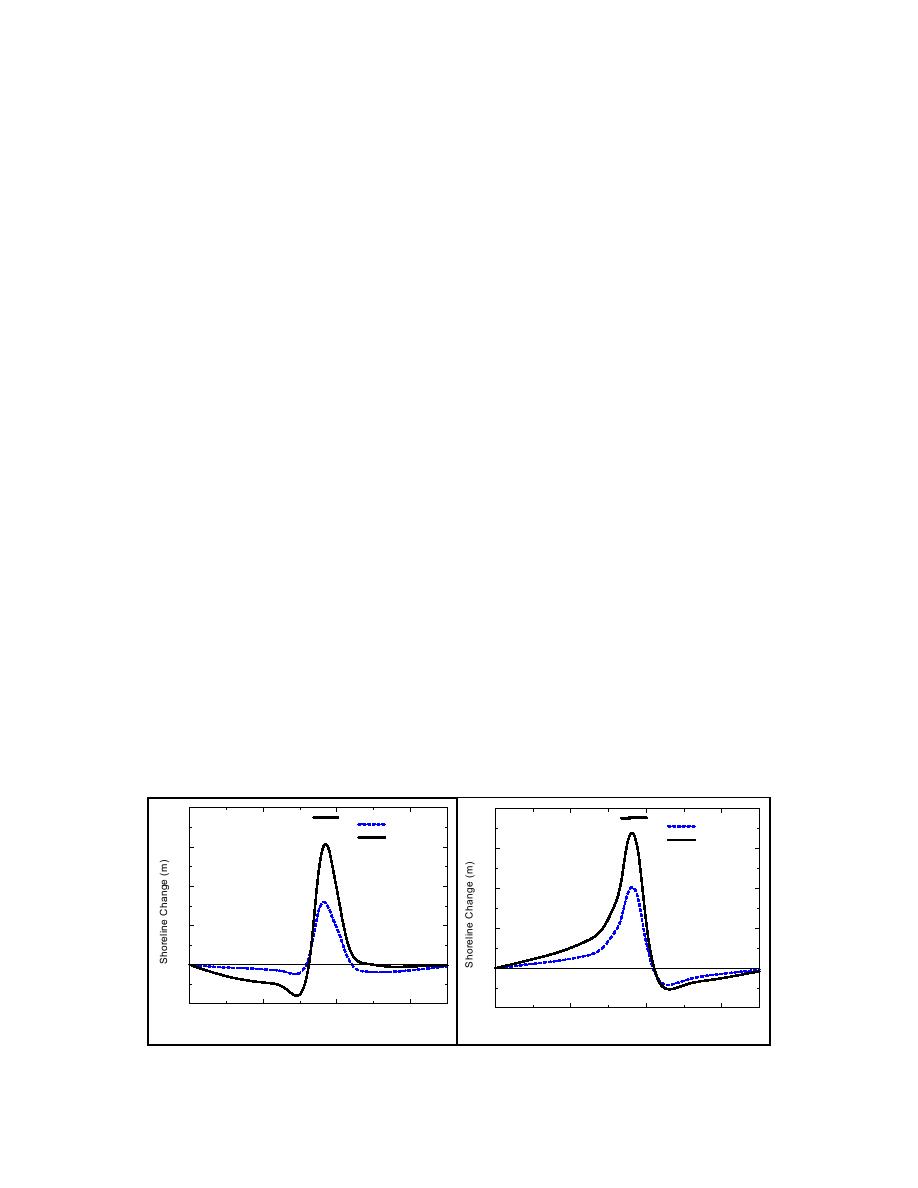
ANALYSIS
The functional utility of the variable Kt for various structural configurations and wave
climates is demonstrated by comparing the shoreline response predictions of simulations based upon
time-dependent and constant values of Kt. Simulations were performed for a (1) single submerged,
(2) emergent near-surface, and (3) high breakwater at an initially straight shoreline. The high
breakwater was designed such that there was little or no wave overtopping, and wave energy was
only transmitted through the structure. Simulations for each structure were forced with both a
typical Atlantic and Gulf of Mexico wave climate. Wamsley and Ahrens (2003) found that the
dominant mode approach (Ahrens 2001) to calculating wave transmission was most appropriate for
application over a wide range of conditions and this method was used for the following analysis.
Simulations were first run with variable transmission and the average Kt computed by the Ahrens
each calculation method is a function of several factors including wave climate, water levels, sand
grain size, depth of active transport, etc. and will differ depending on the application and the
calibration of the model. The percent difference between the constant and time-dependent wave
transmission shoreline predictions indicates the utility of the time-dependent calculation.
Submerged Structure
Figure 1 shows calculated shoreline position change behind a 300-m long submerged detached
breakwater located 300 m offshore for both a typical Atlantic and Gulf of Mexico wave climate after
a simulation time of 4 years. The crest of the structure is at elevation 2 m mean sea level (msl).
The seaward extent of the salient is much greater for the variable Kt simulation. The average
shoreline change behind the structure is 70% greater for the Atlantic wave climate and 90% greater
for the Gulf wave climate. The difference owes to the sensitivity of the prediction to water level and
incident wave height. For submerged structures, the dominant mode of wave transmission is over
the crest and the larger the wave, the less efficient the transmission process. Figure 2 plots change in
Kt versus wave height at constant water level for the Atlantic wave climate and is representative of
the Gulf of Mexico results. The variable Kt computation reduces the larger waves and increases the
smaller waves relative to the constant Kt simulation. Because longshore transport is proportional to
wave height H as H5/2, a change in higher waves produces greater change in transport than does a
similar height differential for smaller waves. The result is greater shoreline advance behind the
structure for the variable Kt simulation.
40
40
Gulf of Mexico Waves
Constant Kt
Atlantic Ocean Waves
Constant Kt
Variable Kt
Variable Kt
30
30
20
20
10
10
0
0
-10
-10
0
1000
2000
3000
0
1000
2000
3000
Distance Alongshore (m)
Distance Alongshore (m)
Fig. 1. Shoreline change behind a submerged breakwater
Wamsley et al
3



 Previous Page
Previous Page
